第50章
All at once the tall figure of the sailor appeared.Pencroft shouted.The engineer and his two companions threw themselves between the sea and the seals.Two of the animals soon lay dead on the sand, but the rest regained the sea in safety.
"Here are the seals required, captain!" said the sailor, advancing towards the engineer.
"Capital," replied Harding."We will make bellows of them!""Bellows!" cried Pencroft."Well! these are lucky seals!"It was, in fact, a blowing-machine, necessary for the treatment of the ore that the engineer wished to manufacture with the skins of the amphibious creatures.They were of a medium size, for their length did not exceed six feet.They resembled a dog about the head.
As it was useless to burden themselves with the weight of both the animals, Neb and Pencroft resolved to skin them on the spot, while Cyrus Harding and the reporter continued to explore the islet.
The sailor and the Negro cleverly performed the operation, and three hours afterwards Cyrus Harding had at his disposal two seals' skins, which he intended to use in this state, without subjecting them to any tanning process.
The settlers waited till the tide was again low, and crossing the channel they entered the Chimneys.
The skins had then to be stretched on a frame of wood and sewn by means of fibers so as to preserve the air without allowing too much to escape.
Cyrus Harding had nothing but the two steel blades from Top's collar, and yet he was so clever, and his companions aided him with so much intelligence, that three days afterwards the little colony's stock of tools was augmented by a blowing-machine, destined to inject the air into the midst of the ore when it should be subjected to heat--an indispensable condition to the success of the operation.
On the morning of the 20th of April began the "metallic period," as the reporter called it in his notes.The engineer had decided, as has been said, to operate near the veins both of coal and ore.Now, according to his observations, these veins were situated at the foot of the northeast spurs of Mount Franklin, that is to say, a distance of six miles from their home.
It was impossible, therefore, to return every day to the Chimneys, and it was agreed that the little colony should camp under a hut of branches, so that the important operation could be followed night and day.
This settled, they set out in the morning.Neb and Pencroft dragged the bellows on a hurdle; also a quantity of vegetables and animals, which they besides could renew on the way.
The road led through Jacamar Wood, which they traversed obliquely from southeast to northwest, and in the thickest part.It was necessary to beat a path, which would in the future form the most direct road to Prospect Heights and Mount Franklin.The trees, belonging to the species already discovered, were magnificent.Herbert found some new ones, among others some which Pencroft called "sham leeks"; for, in spite of their size, they were of the same liliaceous family as the onion, chive, shallot, or asparagus.These trees produce ligneous roots which, when cooked, are excellent; from them, by fermentation, a very agreeable liquor is made.
They therefore made a good store of the roots.
The journey through the wood was long; it lasted the whole day, and so allowed plenty of time for examining the flora and fauna.Top, who took special charge of the fauna, ran through the grass and brushwood, putting up all sorts of game.Herbert and Gideon Spilett killed two kangaroos with bows and arrows, and also an animal which strongly resembled both a hedgehog and an ant-eater.It was like the first because it rolled itself into a ball, and bristled with spines, and the second because it had sharp claws, a long slender snout which terminated in a bird's beak, and an extendible tongue, covered with little thorns which served to hold the insects.
"And when it is in the pot," asked Pencroft naturally, "what will it be like?""An excellent piece of beef," replied Herbert.
"We will not ask more from it," replied the sailor,During this excursion they saw several wild boars, which however, did not offer to attack the little band, and it appeared as if they would not meet with any dangerous beasts; when, in a thick part of the wood, the reporter thought he saw, some paces from him, among the lower branches of a tree, an animal which he took for a bear, and which he very tranquilly began to draw.Happily for Gideon Spilett, the animal in question did not belong to the redoubtable family of the plantigrades.It was only a koala, better known under the name of the sloth, being about the size of a large dog, and having stiff hair of a dirty color, the paws armed with strong claws, which enabled it to climb trees and feed on the leaves.Having identified the animal, which they did not disturb, Gideon Spilett erased "bear" from the title of his sketch, putting koala in its place, and the journey was resumed.
At five o'clock in the evening, Cyrus Harding gave the signal to halt.